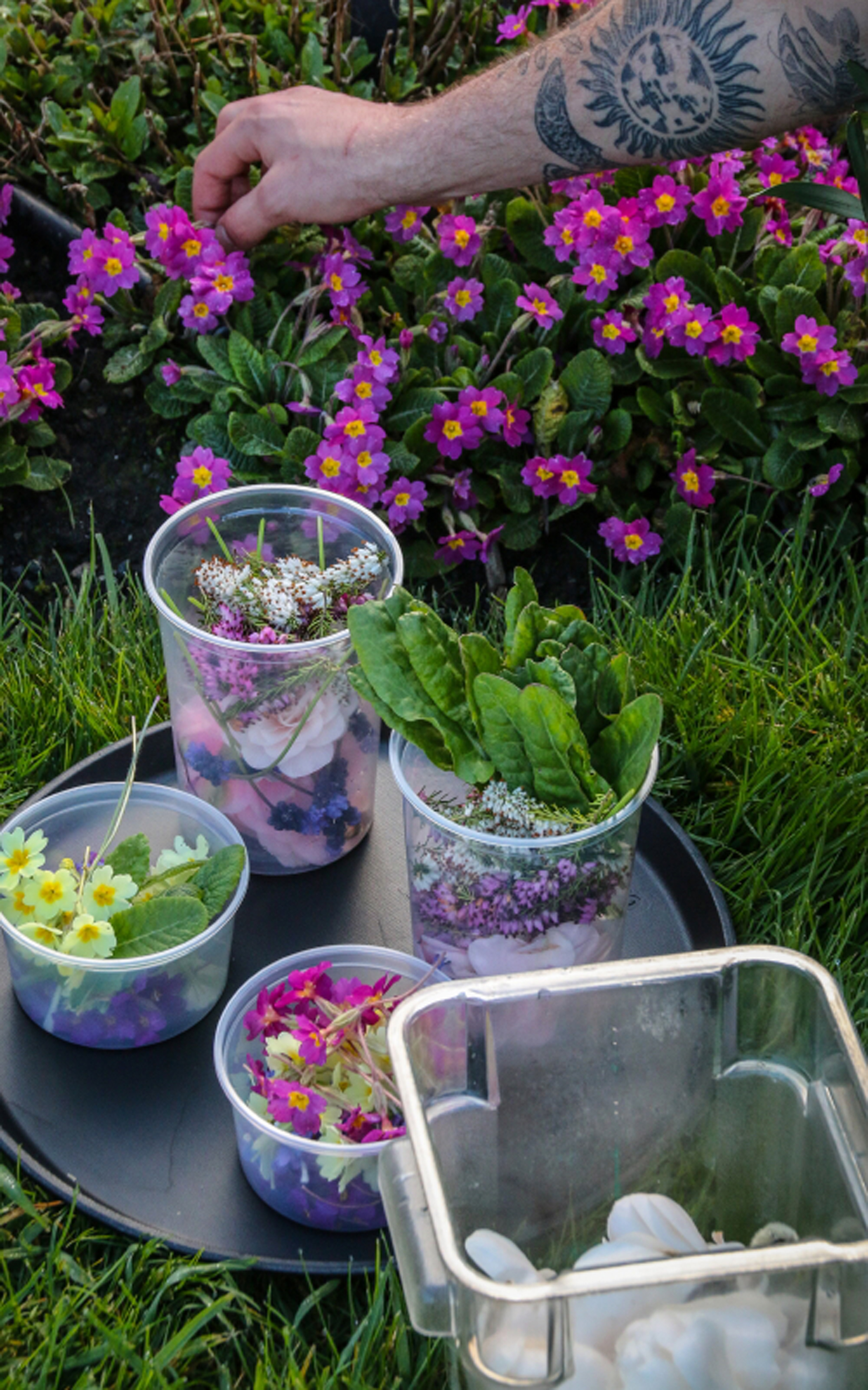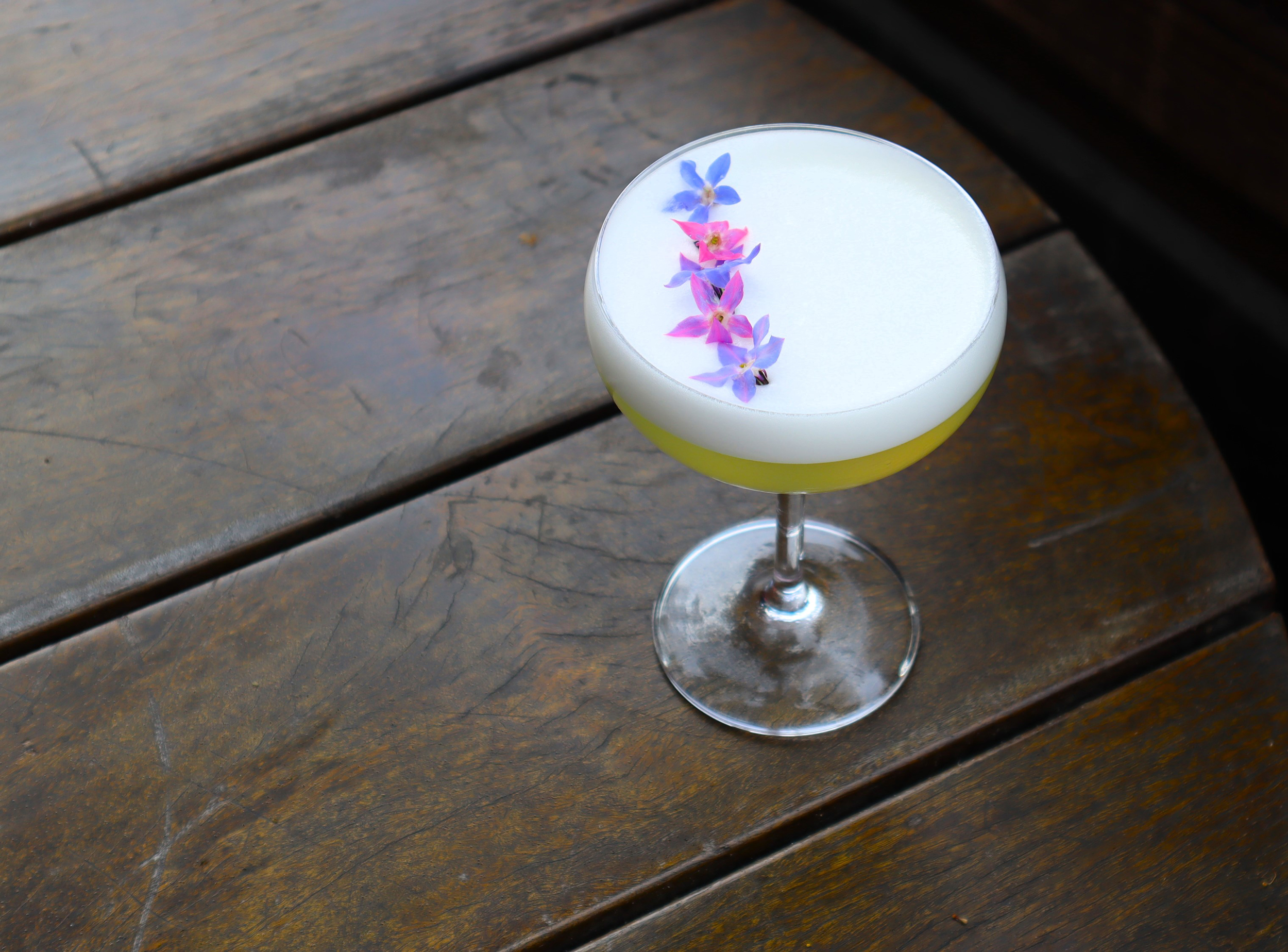Floral Finishes
 The Charlotte & the Quail café is devoted to flowers, which their staff pick every morning and use to garnish everything they serve—even beer. “Everyday, we watch the flowers grow and witness the cycle of life," says Hayley Rosenberg, the owner/manager. "Our garnishes link us with nature. People are seeking this connection, and customers constantly praise our drinks and dishes and how they are decorated.”
The Charlotte & the Quail café is devoted to flowers, which their staff pick every morning and use to garnish everything they serve—even beer. “Everyday, we watch the flowers grow and witness the cycle of life," says Hayley Rosenberg, the owner/manager. "Our garnishes link us with nature. People are seeking this connection, and customers constantly praise our drinks and dishes and how they are decorated.”
On a quest to learn more about how to use flowers as garnishes, I head to the Horticulture Centre of the Pacific, Victoria, where the café is located. It's an early spring morning when I follow AJ, the café manager, as he wanders around the gardens carrying a collection of plastic containers. He plucks pink camellias with large blossoms, several primroses of different colours, blue hyacinths, blue lungworts, heather, white magnolia blossoms with a hint of pink and sorrel, all of which he placed carefully in the containers. “I never stress the beds,” he says, “so I don’t over-pick or take the first or last blooms. The Centre grows these flowers organically, so they are without chemicals or pesticides.”
In summertime, he also picks fuchsias, columbines, marigolds and roses. “My favourite flower visually is the nigella because its delicate blue colour, lacy foliage and intricately striped seed capsules make a gorgeous splash in a drink. For flavour, it’s probably the dahlia.” Other flowers he commonly uses are nasturtiums, orchids, pansies, hibiscus, lavender, cornflower and carnations as well as clover, daisies, dandelions, lilac and mums. I wish I could stay longer, as back in the café AJ begins preparing an orchid-and-gin based cocktail garnished with orchid blossoms.
At Driftwood Spirits, I bump into Kevin O’Neill, who has the unusual title of “Modern Alchemist.” He is truly obsessed with floral garnishes. “I love flowers in cocktails because of their delicacy, beauty and variety in shape, and because you also drink with your eyes,” he says. O’Neill grows many plants in his garden, and in the winter when flowers are scarce, he grows them indoors under lights. He also presses roses and violas in parchment paper so that he has an abundance of flowers always available. In addition, he dehydrates some flowers and also freezes them into ice. His favourite is the viola, which looks great in a Negroni, his cocktail of preference.
I then enter Clive’s Lounge at the Chateau Victoria, a popular cocktail bar, and meet Shawn Soole, the manager and a superb mixologist. In addition to using flowers when seasonally available, he designs and makes his own swizzle sticks using a 3D printer, and carves different shapes of ice and designs glassware to suit the drink. He states emphatically, “Creativity makes a great cocktail and garnishes are crucial to that.”
When I rise to Vista 18, the only rooftop restaurant in the city, I learn that the philosophy behind garnishing food and garnishing cocktails are very similar. The executive chef, Mike Dunlop says, “You have to be an artist, with the plate or glass as your canvas, and all the garnishes must be edible.” He brings a platter filled with garnishes they keep readily available and use frequently: pea shoots, garlic chives, pickled carrots, beet chips, crispy tortilla, wild carrot honey puree and more. “Do not overdo your decorating as this overshadows the dish," he cautions. "Arrange food items using artistic guidelines, like the rule of thirds.” I begin to understand why his dishes look like they belong in an art gallery.
At the Fairmont Empress’ signature Q Restaurant and Q Bar, Chef Tyler Paquette also notes the importance of carefully chosen and arranged garnishes. “Garnishes are very much like edible art and enhance the visual presentation of a dish or drink, making it more attractive and elevating the overall experience...[they] allow chefs to showcase their creativity and culinary skills.” With a smile, he adds, “Of course, I love herbs and flowers; offering variety in colour, texture and flavour, they are definitely my favourite garnish.”
At home, I experiment with being a mixologist and finding ways that flowers can boost the flavour profile of a cocktail. Elderflower, I learn, adds a citrusy floral flavour, whereas nasturtiums are spicy and peppery. Some begonias add a crispy, crunchy texture to the drink, while roses, which go nicely with gin, also bond well with bourbon. In the future, I plan to float a hibiscus in a margarita, or perhaps make a mojito look-alike with clover flowers, tea and rum. Who knows, I might discover that herb blossoms nicely complement a cognac or a tequila.
Ahh, the possibilities are endless...
Photo 1: photo at Charlotte and the Quall taken by Hans Tammemagi
Photo 2: by Kevin O'Neill of Driftwood Spirits




